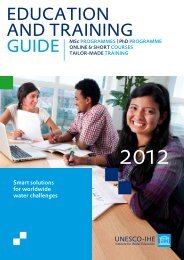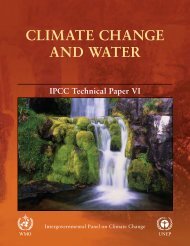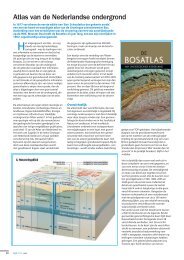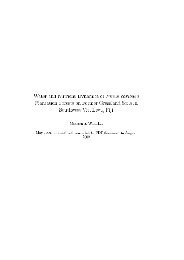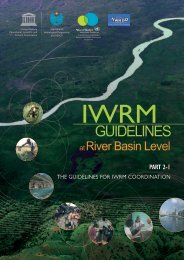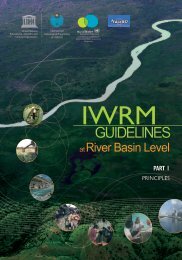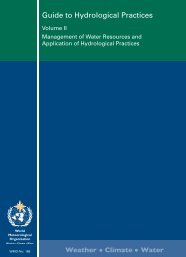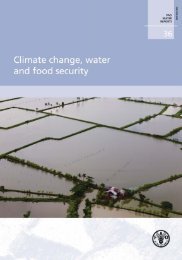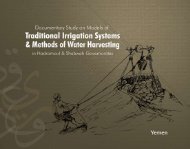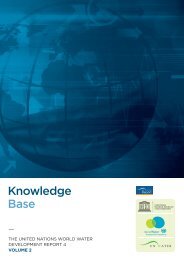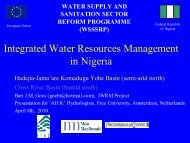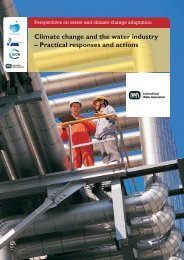Non-renewable groundwater resources: a ... - unesdoc - Unesco
Non-renewable groundwater resources: a ... - unesdoc - Unesco
Non-renewable groundwater resources: a ... - unesdoc - Unesco
- No tags were found...
Create successful ePaper yourself
Turn your PDF publications into a flip-book with our unique Google optimized e-Paper software.
Guidelines■ Groundwater <strong>resources</strong> whose replenishment takes very long in relation to the time-frameof human activity are conveniently termed ‘non-<strong>renewable</strong> <strong>groundwater</strong> <strong>resources</strong>’ – andthe volume of such <strong>groundwater</strong> stored in some aquifers can be huge. In these cases oneis usually dealing with ‘fossil (or palaeo) <strong>groundwater</strong>’, recharged in past, more humid,climatic regimes, but not all aquifer systems containing fossil <strong>groundwater</strong> are non-<strong>renewable</strong>.■ Development of non-<strong>renewable</strong> <strong>groundwater</strong> <strong>resources</strong> implies the ‘mining of aquiferstorage reserves’, and as such takes on particular social, economic and political sensitivities.But especially in many of the world’s more arid regions, the use of non-<strong>renewable</strong> <strong>groundwater</strong>offers an opportunity to alleviate growing water scarcity, improve social welfare andfacilitate economic development. To constrain resource utilisation on grounds of not being‘physically sustainable’ in the long-term is simplistic and insufficient, since such developmentcan (and should) be considered socially-sustainable if certain criteria can be met and specificrisks can be managed.■ To meet the requirement of ‘social sustainability’ in respect of development of the non<strong>renewable</strong><strong>groundwater</strong> resource, the following criteria need to be addressed :• it should lead to clear improvements in social well-being and livelihoods;• the balance between short-term socio-economic benefits and longer-term ‘negativeimpacts’ must be positive;• an ‘exit strategy’ should exist, with an answer to the question ‘what comes after theaquifer becomes seriously depleted’;• the issue of inter-generational equity has to be considered.■ Concomitantly, it should be recognised that predicting the longer-term evolution of anygiven case of <strong>groundwater</strong> mining will be subject to significant uncertainty (as a result ofincomplete hydrogeological understanding, innovations in water technology, changingglobal agriculture and food markets, accelerated climate change, etc), which places limits onconventional resource management. This dictates the need to incorporate more flexible andadaptive risk-based approaches, which need to find political acceptance.■ In practice the utilisation of non-<strong>renewable</strong> <strong>groundwater</strong> tends to occur in two scenarios :• ‘planned aquifer depletion’ – whose management goal is orderly utilization of aquiferreserves (of a system with little pre-existing development) with expected benefits andpredicted impacts over a specified time-frame;• ‘excessive unplanned exploitation’ – with incidental depletion of aquifer reserves as aresult of intensive <strong>groundwater</strong> abstraction in areas with limited contemporary recharge.59




